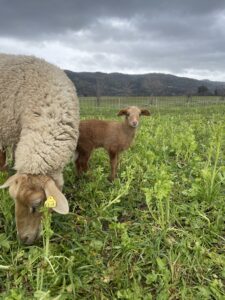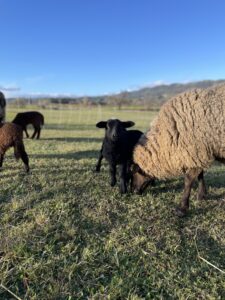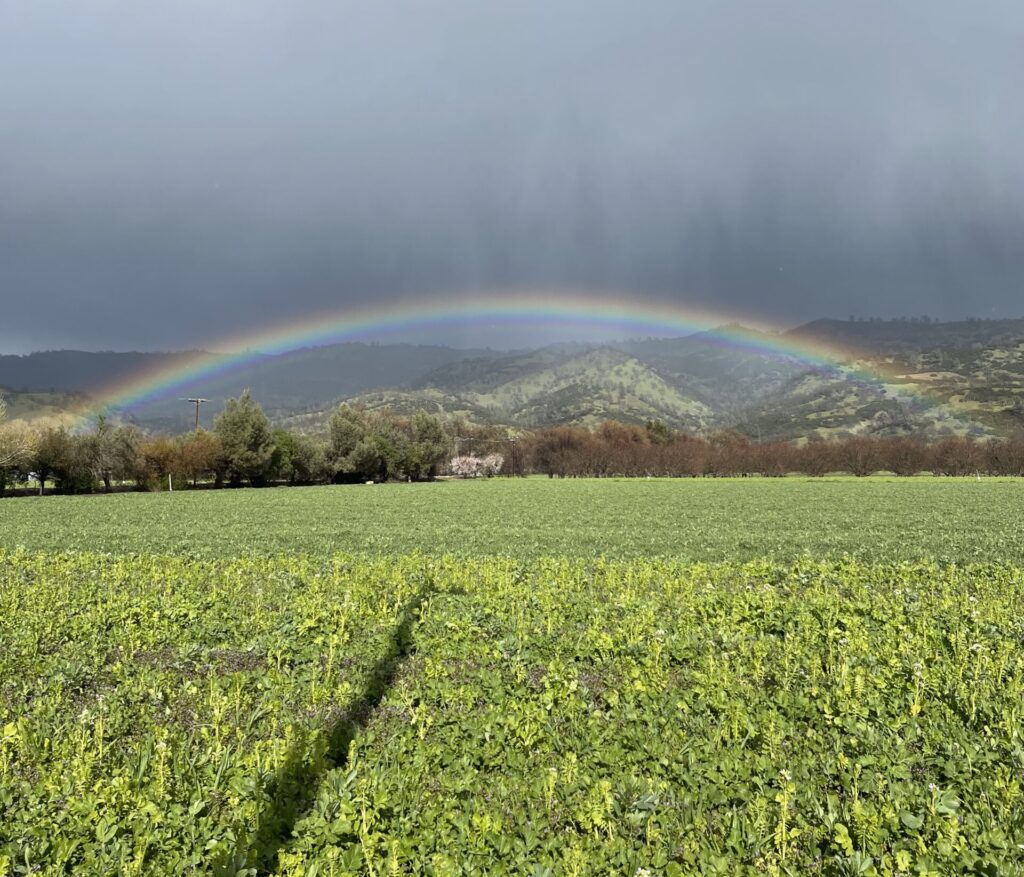
Today (Monday) is the first day of Spring. As Carly wrote last week, so far, 2023 has been a year of more cold days, grey skies, freezing nights, wind, hail, snow, and, of course, lots of rain. Just in the last two weeks we’ve had at least seven inches of rain, and we got 1.5 inches between late Monday night and early afternoon Tuesday. Water levels in Cache Creek rose dramatically, a combination of runoff and a water release from the Clear Lake Reservoir, and there was a lot of standing water around the farm, especially on roads and in the furrows between rows (where we drive tractors and walk when weeding/harvesting), really highlighting how differently compacted and uncompacted soils handle water. Within 24 hours, the creek levels had gone down and almost all of the standing water had been absorbed. It was quite a dramatic change!
Throughout all of the January, February, and March rain, we have been very fortunate, especially compared with the many other farms and communities that have experienced major damage, particularly on the Central Coast. These farms and communities could use your help. CAFF has an emergency fund you can donate to, Kitchen Table Advisors is keeping a list of farms who need support and other organizations you can donate too, and this article about the town of Pajaro has additional resources.
We’re largely appreciative of all the rain, but even when not facing monumental flooding, the rain is bringing it’s share of complications for us:
With the cold weather, several of our crops (flowers, asparagus, etc.) are about three weeks behind. Last week’s “Pineapple Express” and warmer weather has already caused noticeable plant growth; the cover crops (shown below) have about doubled in height in the past two weeks.
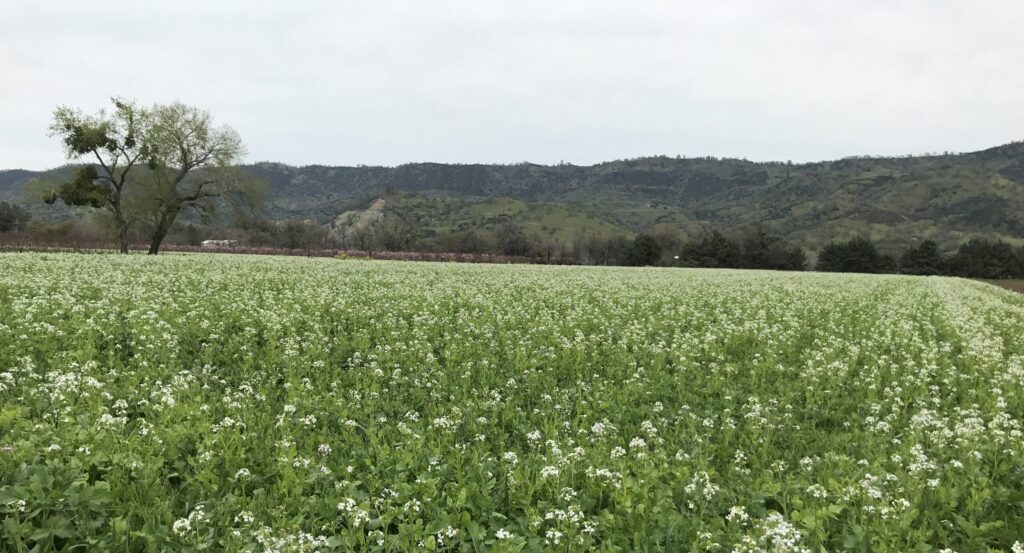
Almond and stone fruit trees bloom this time of year and are vulnerable to cold, wet weather. Andrew is reporting that so far fruitlets and nutlets are looking fine, despite wet and windy days during bloom and several nights of cold temperatures after that. The wet weather does make us worry about fungus, particularly brown rot. Spring is usually a time for all fruit or nut growers to spray to prevent a long list of future issues. In recent years, we’ve moved away from spraying fungicides to using probiotics to outcompete fungi and other pathogens. It’s too wet right now to get into any orchard to spray anything; large nut and fruit growers in the area might use airplanes, or even helicopters, to spray, but that’s not something we’d consider.
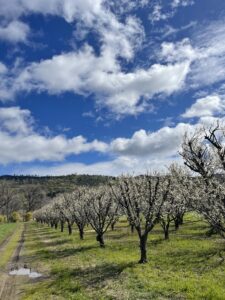
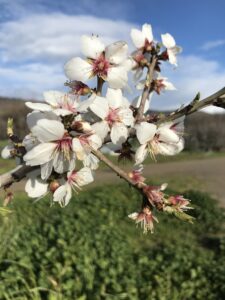
Summer crop transplants are ready in the greenhouse, but there aren’t enough dry days or ready fields. We did get a field of lettuce planted on Saturday but now that it’s rained again, the soil is too wet to have a tractor in the field. Many of our fields aren’t ready for transplanting; they are still planted in cover crops that need to be mowed and incorporated into the soil and it’s too wet for tractors, or for sheep (our other mowers) to start. Some transplants can be trimmed to slow down their growth (onions, parsley, and other plants without a growing tip) and with other plants, we can put them into trays with larger cells, which is what we did with 10,000 plants, mostly tomatoes. Larger transplants means we might not be able to use the same transplanters that we usually do, but that’s preferable to loosing those plants. We probably have to wait about three weeks to really begin transplanting in earnest.
Lastly, all the rain impacts people. No one enjoys working in the cold and wet, though our on-farm and farmers market teams have been bravely working through less-than-ideal conditions. Some teams have been switching their work (the flower team helping harvest greens and pack CSA boxes, for example) and we’ve been working through the big list of non-field projects. During particularly bad weather, we end the day early, but less hours of work also means smaller paychecks, which is difficult. This time of year is always financially tricky for farms; there isn’t much in the fields to harvest, even when the weather is nice, but it is a time of year with a lot of expenses for the farm, and all employees still have regular life expenses. When the weather is nice enough, we’ll work extra hours (there’s plenty of weeding to catch up on!) and we know the pace will pick up, as soon as it dries out and warms up, which will happen eventually, right?
Elaine Swiedler, CSA Manager
